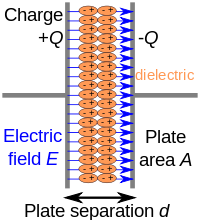
Photo from wikipedia
Abstract The crystallization, microstructure and magnetic properties of Fe83NixB16−xCu1 (x = 0, 1, 2, 4) alloys are investigated by Mossbauer spectroscopy, X-ray diffractometry and magnetometry. The substitution of Ni for B in… Click to show full abstract
Abstract The crystallization, microstructure and magnetic properties of Fe83NixB16−xCu1 (x = 0, 1, 2, 4) alloys are investigated by Mossbauer spectroscopy, X-ray diffractometry and magnetometry. The substitution of Ni for B in the Fe83B16Cu1 alloy enriches Fe clusters in melt-spun ribbons and promotes the nucleation of α-Fe(Ni), which is beneficial to the formation of high volume fraction of nanocrystals after crystallization. Furthermore, the addition of 1–2 at.% Ni widens the annealing temperature range for the alloys with low HC. Excellent magnetic properties with high saturation magnetic flux density (BS) of 1.83 T and low coercivity (HC) of 9.2 A/m are obtained by annealing the Fe83Ni2B14Cu1 melt-spun ribbons. In addition, the nanocrystalline alloy with x = 2 possesses a lower saturation magnetostriction (19 ppm) than that of the Ni-free alloy (25 ppm).
Journal Title: Journal of Magnetism and Magnetic Materials
Year Published: 2019
Link to full text (if available)
Share on Social Media: Sign Up to like & get
recommendations!